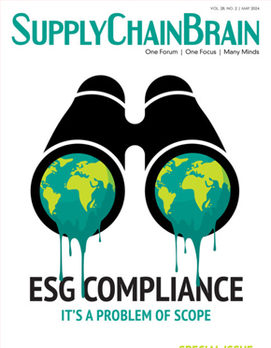
Christmas is coming, and retailers are already struggling to meet demand due to the lasting impact of the pandemic on supply chains. As we near the end of the year, when holiday sales and shopping reign supreme, companies need to implement proactive strategies that maximize inventory, or else face margin-crushing supply challenges. Artificial intelligence may offer a solution.
The footwear segment of retail presents unique challenges to inventory management, due to issues of sizing variability and return patterns. AI can transform how footwear companies resolve these challenges by helping them manage inventory, forecast market demand and monitor profit margins.
If forecasting were a puzzle, sales forecasting would make up the edge pieces and return forecasting would make up the center. You can’t have a comprehensive picture of retail forecasting without both sales and returns data. Unfortunately, most forecasting systems anticipate sales and neglect returns, likely because returns analysis is far more complex.
For footwear companies especially, where return rates were as high as 40% before the pandemic, sales forecasting alone presents an extremely limited picture of a company’s overall activity. Since the 2020 lockdowns, online sales and returns have only increased.
Some footwear companies are realizing a specific trend in consumer behavior: Customers are buying three pairs of shoes in different sizes so they can try them on at home and return the two that didn’t fit. This is a huge profit killer, because footwear retailers often can't resell what’s been returned from an online purchase as easily as they can a store purchase, where shoe fittings happen in a more controlled environment. Returns may also be due to differences in colors or styles if, for instance, the buyer doesn’t think the shoe looks the same in person as it did online.
To navigate this trend, stores have started to resell “open-box” shoes at a discounted price. While this strategy has helped to stanch hemorrhaging profits, returns and discounts must all be factored into a highly complex math equation, making it nearly impossible to understand the larger inventory picture.
This is where AI can change the game. All retailers need accurate forecasts based on available data to predict and plan for the performance of each retail channel, whether it be online, in-store or a blended buy online, pickup in store (BOPIS) sale. This is an incredible wealth of data to manage, but AI can simplify the process by providing and interpreting inventory insights down to the store, SKU, size, color and style. Only with this degree of detailed information will footwear companies be able to make accurate predictions about sales and returns, and plan inventory accordingly.
Determining Size Optimization With AI
Size optimization is a critical component of the footwear industry, but many retailers don’t have the tools necessary to make informed decisions. A single style of shoe can come in as many as 15 sizes, sometimes more. And when customers purchase more sizes than they will ultimately keep, predictions become more all the more complicated.
AI can pull critical data from multiple sources, not just historic sales, to help retailers determine which sizes to stock more or less of. AI-generated forecasts are then further improved with machine learning, which gets smarter over time thanks to new data and updated information. The best AI forecasting systems give more accurate predictions, because they’re constantly learning from the result of each forecast and adjusting accordingly for even further accuracy. Ideally, for a retailer this would result in automated, “no touch” demand forecasting, giving human planners more time to focus on the exceptions.
Supply chain delays have thrown a wrench in replenishment planning. Most merchandisers predict which and how many products they’ll sell early in the season, and make a long-term plan based on this forecast. Without detailed, real-time forecasting, especially in the face of supply chain volatility, these early predictions can be a guessing game at best.
AI provides detailed insights into sales, and can help retailers optimize their pre-season allocation strategy. Companies can then determine buying trends and patterns, analyze inventory and incorporate actual sales and returns to make more accurate in-season predictions.
With AI, retailers can get this information in real-time so they can act promptly, instead of waiting or making moves based on outdated information. With insights into week-by-week sales, retailers can take a more proactive approach to replenishment. They’ll be able to determine what to restock, what may sell out and the rate of returns on a given product. In this way, retail replenishment is transformed, and margins expand for better profits.
A Store-By-Store Approach
To thrive and grow in this post-pandemic shopping environment, footwear retailers need to take a store-by-store approach when determining a forecasting, allocation and replenishment strategy. Retailers can’t simply rely on last year’s data, regional data or overarching predictions; they need to incorporate granular levels of insights that generate data-driven and usable recommendations. Slight differences in demographics can significantly impact which sizes and styles will be more popular than others in a given region at a given time.
This may sound daunting for footwear retailers with multiple stores across the country or world, but AI makes the process attainable by automating the data collection and modeling. Retailers can spend more time making accurate forecasts and taking steps based on reliable data, instead of making predictions from educated guesses.
Many industries, from retail to fashion to food, have taken reactive approaches to inventory retail strategies for far too long. We have the technology and tools to make accurate forecasts and maximize profits in times of extreme market volatility. It’s time for retailers to invest in a scientific methodology and AI-powered, omnichannel-focused strategies that make forecasting, allocation and replenishment more accurate and more effective. AI makes this possible, and it gets smarter every day.
Yogesh Kulkarni is co-chief executive officer of antuit.ai, part of Zebra Technologies.







